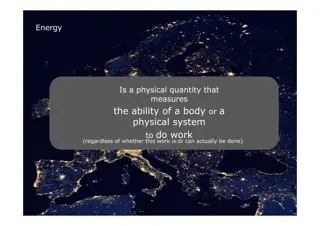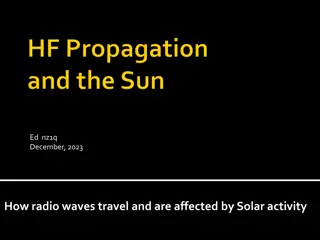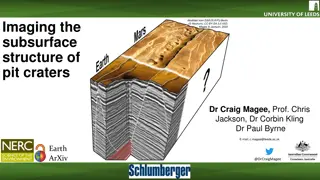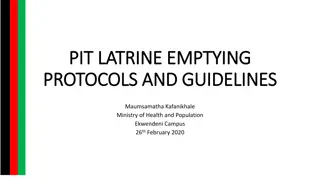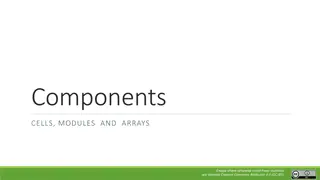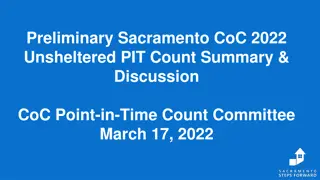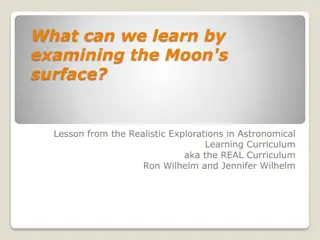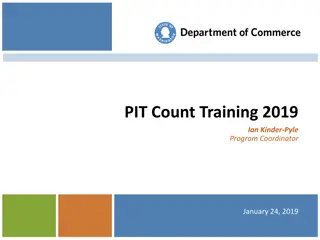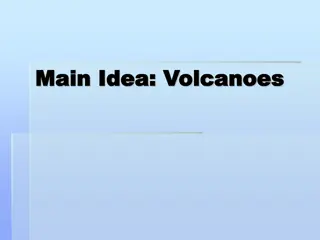Central Pit Craters Across the Solar System - Comparative Study
Study led by Nadine G. Barlow and team from Northern Arizona University investigates central pit craters on various celestial bodies. Central pit craters are unique crater formations with central depressions, seen on Mars, Ganymede, Callisto, and more. The project aims to compare these craters on different bodies, explore formation mechanisms, and assess similarities and differences to potentially propose new formation models.
Download Presentation

Please find below an Image/Link to download the presentation.
The content on the website is provided AS IS for your information and personal use only. It may not be sold, licensed, or shared on other websites without obtaining consent from the author.If you encounter any issues during the download, it is possible that the publisher has removed the file from their server.
You are allowed to download the files provided on this website for personal or commercial use, subject to the condition that they are used lawfully. All files are the property of their respective owners.
The content on the website is provided AS IS for your information and personal use only. It may not be sold, licensed, or shared on other websites without obtaining consent from the author.
E N D
Presentation Transcript
Central Pit Craters Across the Central Pit Craters Across the Solar System Solar System Nadine G. Barlow Aviva Maine Sierra Ferguson Dept. Physics and Astronomy Northern Arizona University Flagstaff, AZ 86011-6010 USA
What are Central Pit Craters? Craters which contain central depression, either directly on floor (floor pit) or on central rise/peak (summit pit). Distinct from peak rings. Seen on icy bodies such as Mars, Ganymede, and Callisto. Reported to also occur on volatile-poor bodies (Mercury, the Moon).
Proposed Formation Mechanisms for Central Pits Escape of vaporized target volatiles (Wood et al., 1978) Central peak collapse (Passey and Shoemaker, 1982) Layered targets (Greeley et al., 1982) Collapse of weak core materials/melt drainage (Croft, 1981; Senft and Stewart, 2011; Elder et al., 2012) Explosive release of volatiles interacting with impact melt (Williams et al., 2015)
Objectives of this Project Compare central pit craters across the solar system: Mercury, the Moon, Mars, Ganymede, Callisto, Tethys, Dione, Rhea (may be adding Ceres) Determine similarities and differences between central pit craters on volatile-richer vs volatile-poorer bodies Use results to determine if a single formation model can explain all central pit craters, if multiple models are needed, or if a new model is indicated. Moon Mercury Ganymede Tethys Mars
Methodology Datasets for central pit survey: Mercury: MESSENGER MDIS global mosaic (250 m/pixel) Moon: LRO WAC global mosaic (100 m/pixel) Mars: THEMIS daytime IR global mosaic (100 m/pixel) Ganymede and Callisto: Galileo and Voyager (60 km/pixel-400 m/pixel) Dione, Rhea, and Tethys: Cassini and Voyager (250-400 m/pixel) Divided into floor pit or summit pit (use topo data when available) Floor pits subdivided into rimmed and unrimmed pits Geographic coordinates, crater diameter, preservational state, and underlying geologic unit determined. Pit diameter measured and Dp/Dc computed For Mars, using variety of image, mineralogical, and topographical datasets for detailed geomorphic and structural mapping of selected fresh central pit craters.
Observations: Pit Types Mercury Moon Mars Ganymede Tethys* Dione* Rhea* # Floor pits 7 8 1161 471 13 12 12 # Summit pits 15 2 625 0? Dc range (km)- -floor 13.9-30.7 10.5- 55.4 5.0- 114.0 12.0-143.8 10.9-450.0 17.0-74.9 16.7-230.0 Dc range (km)- -summit 16.2-30.7 28.9- 30.4 5.1- 125.4 Median Dc (km)--floor 17.2 35.3 13.8 38.1 22.5 32.9 46.1 Median Dc (km)--summit 25.0 29.7 14.4 * Pits have not been divided into floor and summit pits
Observations: Dp/Dc Mercury Moon Mars Ganymede Tethys* Dione* Rhea* Dp/Dc range floor 0.08-0.15 0.08- 0.16 0.02- 0.48 0.06-0.43 0.14-0.42 0.15-0.32 0.17-0.33 Dp/Dc range summit 0.07-0.15 0.06- 0.11 0.02- 0.29 Median Dp/Dc floor 0.14 0.12 0.16 0.20 0.18 0.22 0.23 Median Dp/Dc-- summit 0.11 0.08 0.12 * Pits have not been divided into floor and summit pits
Observations: Pit Depth Craters display a well-known depth/diameter relationship. Do pits have a similar relationship? Used shadow length technique of Chappelow and Sharpton (2002) to determine depths of a sample of Martian floor pit craters (N = 320). Result: random distribution
Detailed Mapping Esira crater (Mars) 16.3-km diameter 8.9 N 313.4 E Rimmed floor pit crater Observations Uplifted megablocks in pit rim Impact melt has flowed from crater floor into pit
Overall Trends No correlation of central pit occurrence with specific geologic units. On Mars, unrimmed floor pits more common on volcanic units; rimmed floor pits and summit pits more common in highlands regions. Floor pits tend to be larger relative to parent crater than summit pits. Central pit craters are rarer on volatile-poor bodies and on bodies with lower surface gravity. Floor pits are more prevalent as concentration of target volatiles increases. No depth-diameter relationship exists for pits. Dp/Dc is consistently higher for bodies with volatile-rich crusts (Ganymede, Tethys, Dione, Rhea) than for volatile-poor crusts (Moon, Mercury). Mars is an intermediate case. Dp/Dc tends to increase as surface gravity increases from Moon to Mercury to Mars. Similar trend not seem among Tethys, Dione, Rhea, and Ganymede.
Implications for Formation Models Still early in the analysis but Dp/Dc vs gravity trends suggests that collapse of weaker material may be responsible for pit formation on Moon, Mercury, and Mars. Lack of similar trend for volatile-rich bodies suggest crustal volatiles can mask this effect. Prevalence of rimmed floor pits plus identification of uplifted megablocks in Esira s pit rim indicate uplift is involved as well as collapse. Identification of impact melt flowing from Esira s floor into pit indicates pit formation is essentially contemporaneous with crater formation. These results indicate that formation models involving only collapse and/or only volatile targets cannot explain all the central pit craters in the solar system. Funding from NASA Mars Data Analysis and Planetary Geology and Geophysics Programs





